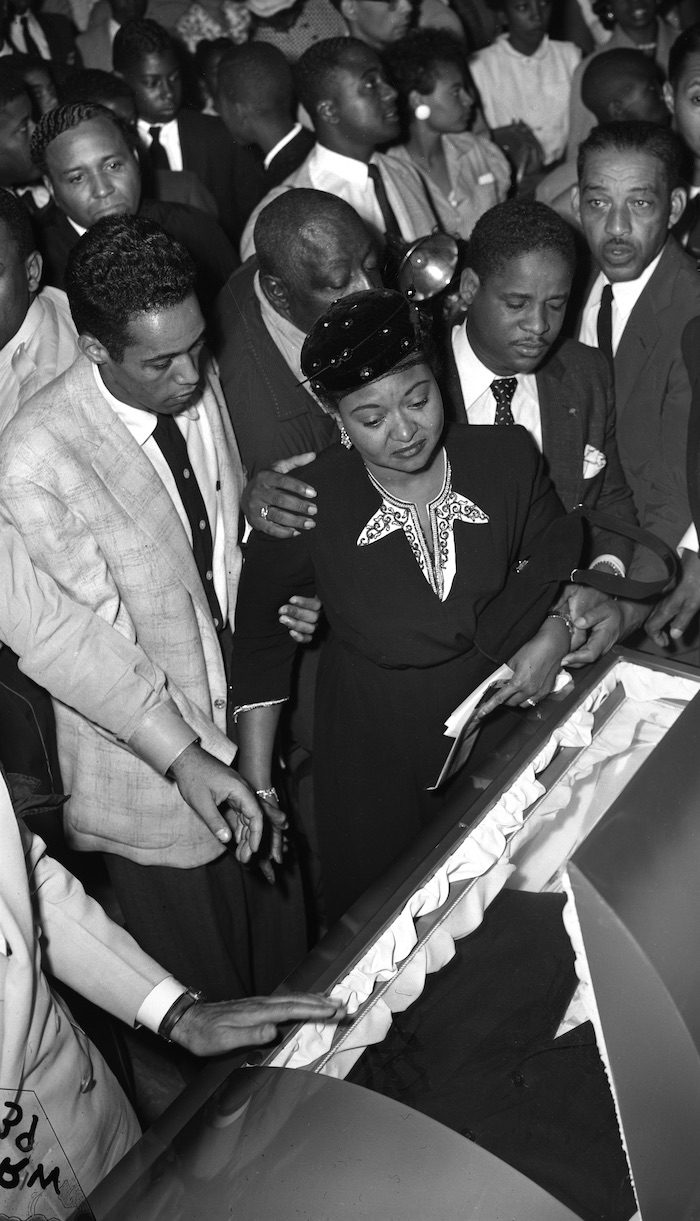On July 25, 1941, Mamie and Louis Till celebrated the birth of their only son Emmett at Chicago’s Cook County Hospital. Like many African Americans of the era, Emmett’s parents were part of the millions of Blacks who migrated north during what is now known as the Great Migration—Mamie from Mississippi and Louis from Missouri. The young couple met in Chicago and were married by the age of eighteen.
When Emmett was a teenager, like many migratory families of the time, he was sent to spend a summer visiting relatives still living in the South. A few days after arriving in Money, Mississippi, tragedy would strike when a then fourteen-year-old Emmett was accused of making overt gestures at Carolyn Bryant, a white woman, in her family’s store.
Around 2:00 a.m. on August 28, 1955, Bryant’s husband Roy and his half-brother John Milam kidnapped Emmett from his uncle’s house where he was staying. In the early morning, Emmett was brutally tortured, shot, and killed. His mutilated body was tied with barbed wire to a cotton gin fan and dumped in the Tallahatchie River. Three days later, Emmett’s badly decomposed body was found. The grotesquely disfigured corpse hardly resembled a human form.

Emmett Till and his mother Mamie Till, c. 1950. Library of Congress, LC-DIG-ppmsca-48234. Mamie Bradley, the mother of Emmett Till, takes a last look at his open casket, Chicago, September 6, 1955. Photograph by Ralph Walters, Chicago Sun-Times Collection, CHM, ST-17500641. © Sun-Times Media, LLC. All rights reserved.
When his body was returned to Chicago, his mother insisted on an open-casket funeral to “let the world see what I’ve seen.” Photographs published in the Chicago Defender and JET magazine, along with an account of the last days of Emmett’s life, were the first public recordings of the lynching. These images sparked outrage throughout the United States. Many historians attribute the reaction to these images as one of the catalysts that began the modern Civil Rights Movement.
In September 1955, an all-white jury acquitted Bryant and Milam, who confessed to the murder in 1956 after they were safe under double jeopardy laws. In 2017, it emerged that in a 2008 interview, Carolyn Bryant admitted to lying about what she had accused Emmett of doing to her. Unfortunately, Till would neither be the first nor the last person of color to lose their life or freedom on the basis of a lie conceived in racism.
In 2004, the Chicago History Museum acquired Franklin McMahon’s courtroom drawings of Bryant and Milam’s trial. With more than forty works ranging from simple pencil sketches to intricate ink-and-wash drawings, McMahon’s documentation is an invaluable record of what became one of the seminal moments of the modern Civil Rights Movement. See the drawings in the Fall 2005 issue of Chicago History magazine.